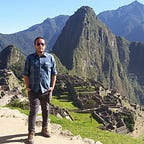Hunter Gatherer Sites as Heritage: Twyfelfontein
One of the main goals of UNESCO when designating World Heritage Sites is to represent human cultures and specific periods through humankind’s history. As part of that process, prehistoric archaeological sites have a key role representing ancient human societies. Hunter-gatherer sites are certainly very good examples of the early stages of humanity, and they are evidence how people appropriated and interacted with their environment at that time.
Despite the fact that there are not too many hunter-gatherer sites in the World Heritage List, it is possible to see a few interesting sites that represent these type of societies. One good example is the case of Twyfelfontein or /Ui-//aes in Namibia, Africa (Figure 1).
Twyfelfontein is a hunter-gatherer archaeological site located in the northwestern part of Namibia, in the Kunene region. It was inscribed in 2007 as a World Heritage Site by UNESCO, and it was designated as a cultural Site (UNESCO, 2017). The site contains numerous rock art paintings and materials from the Stone Age. These elements are tangible material culture from hunter-gatherer societies, and therefore they represent the one of the early stages of human development in the past. “The great importance of this site is that petroglyphs in all stages of wear and of various styles are found there, which makes it impossible to date them relatively. There are also some paintings and an abundance of stone implements” (Viereck and Rudner, 1957, p. 15).
The rock art in Twyfelfontein shows elements of nature and landscape that hunter-gatherer societies interacted with (Figure 2). Most of the representations are petroglyphs and paintings of animals, footprints and a few human portraits; which were spread through several shelters and rock panels (Viereck and Rudner, 1957). One of the most valuable aspects of these archaeological records is that they allow us to have a closer approach to hunter-gatherer lifestyle, and a better understanding of their relationship with the environment.
According to UNESCO’s criteria (2017) to include a site in the World Heritage list, Twyfelfontein meets to following criteria:
Criterion (iii): The rock art engravings and paintings in Twyfelfontein form a coherent, extensive and high quality record of ritual practices relating to hunter-gather communities in this part of southern Africa over at least two millennia.
Criterion (v): The rock art reflects links between ritual and economic practices in the apparent sacred association of the land adjacent to an aquifer as a reflection of its role in nurturing hunter-gather communities over many millennia.
A site such as Twyfelfontein provides a good example of UNESCO’s goal to protect sites that represent exceptional testimony of a cultural tradition or civilization that has disappeared. Hunter-gatherer sites especially, bear a unique status as cultural patrimony of humanity since they are scarce on the World Heritage list, and tangible culture left by these type of societies is not abundant in the archaeological record.
Twyfelfontein also provides a socioeconomic boost to the local communities in Namibia, since they have developed a sustainable management plan that provides benefits to all stake holders involved — protection and conservation of cultural assets on one hand; tourism and socioeconomic development on the other (Ndlovu et al., 2011).
Hunter-gatherer archaeological sites like Twyfelfontein represent valuable assets for both UNESCO and local entities. For researchers they hold archaeological evidence of ancient societies, and for local communities they provide an opportunity for them to participate in a sustainable local economy.
References
Ndlovu, J., Nyakunu, E., & Auala, S. (2011). Community Based Tourism in Twyfelfontein Conservancy: Exploring Local Community’s Involvement. International Journal of Hospitality & Tourism Systems, 4(2).
Twyfelfontein or /Ui-//aes. UNESCO Centre. Retrieved: March 25, 2017, from http://whc.unesco.org/en/list/1255
Viereck, A., & Rudner, J. (1957). Twyfelfontein: a centre of prehistoric art in South West Africa. The South African Archaeological Bulletin, 15–26.
